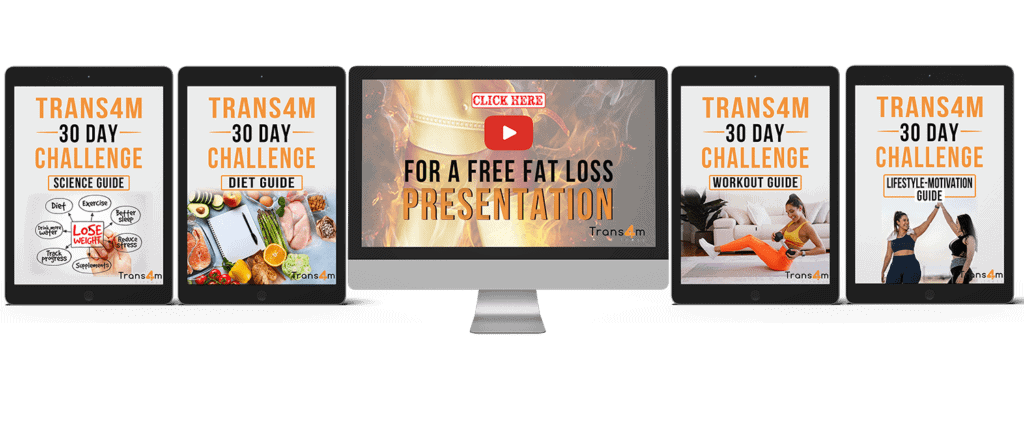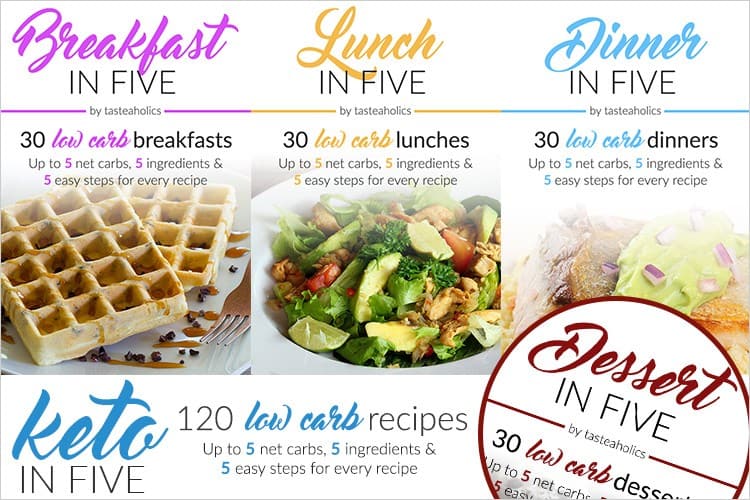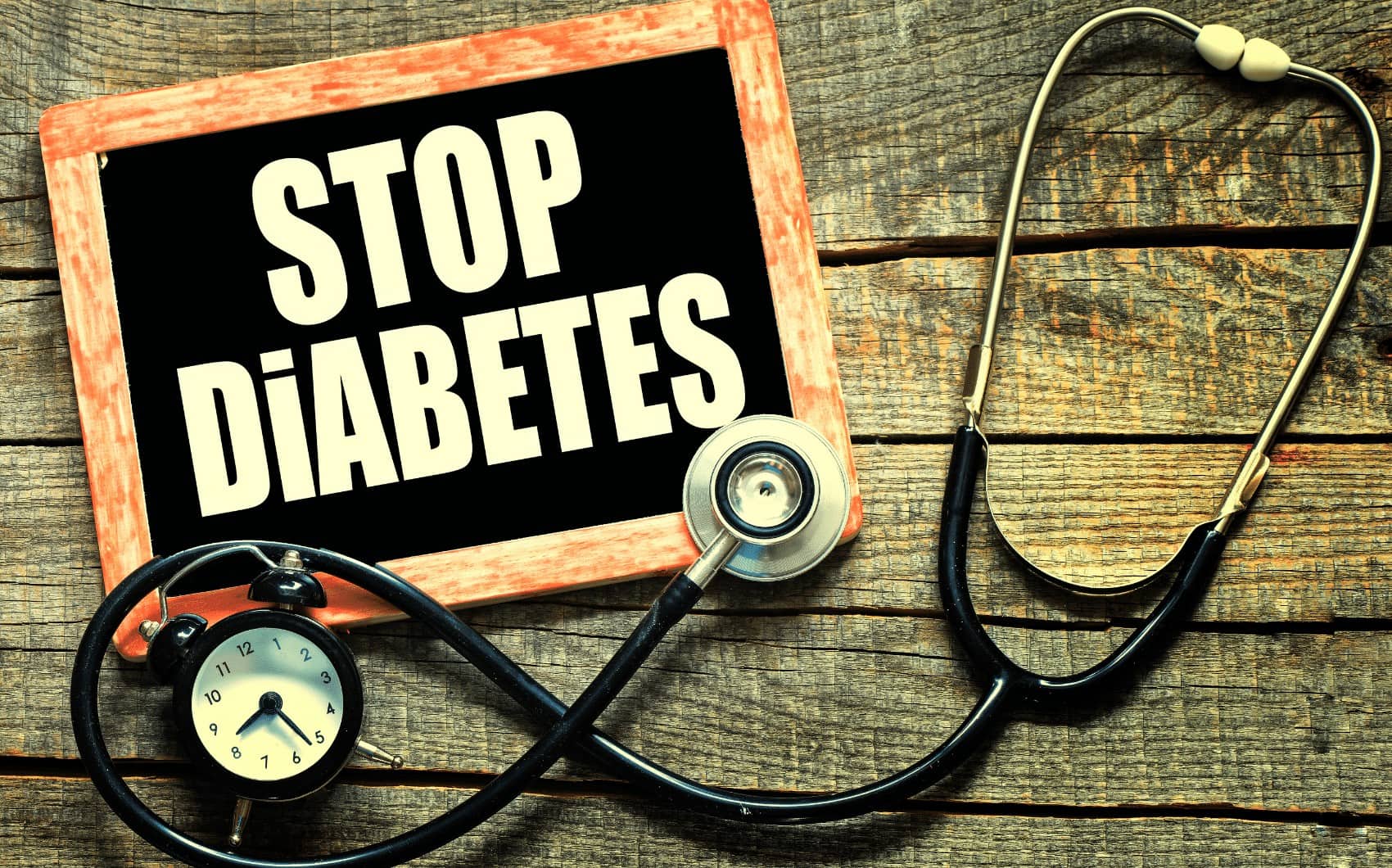
Reverse your pre-diabetic symptoms today by making lifestyle changes now!
‘’You are what you eat’’. Watch out for what you put in your body. Bad food choices can lead to morbidities like diabetes, high blood pressure or, coronary heart disease. Make changes today to see the difference tomorrow and live a happy, energetic life!
What is Pre-diabetes?
Prediabetes is a condition where blood sugar level is higher than normal but not high enough to be called diabetes. According to the center for disease control CDC, approximately 88 million American adults-more than 1/3rd-of the total population have prediabetes. Among those, only 16% are aware of their condition while others don’t know at all about their situation which, may lead to diabetes one day.
Prediabetes puts you at a greater risk for developing: 1
Diabetes type 2
Heart diseases
Stroke
Gall bladder disease
Is Pre-diabetes a disease?
‘’Don’t let the “pre” word make a fool out of you’’, says no other but CDC. 1 Prediabetes is a red light signal for you, that you must stop and evaluate your health as soon as possible. Something fatal can happen to your body in the form of diabetes. Prediabetes might serve as the last mayday call for diabetes if you did not take proper intervention steps.
Prediabetes is a red light signal for you, that you must stop and evaluate your health as soon as possible. Something fatal can happen to your body in the form of diabetes. Prediabetes might serve as the last mayday call for diabetes if you did not take proper intervention steps.
Am I at risk for prediabetes?
Yes, you may have prediabetes if you fulfill more than one criteria mentioned below:
- Being overweight.
- A High-fat percentage in the body puts you at a greater risk for diabetes and prediabetes. High fat to muscle ratio puts an energy strain on the body and halts the normal functioning of tissues.
- Age more than 45 years
- You have a diabetic patient in the immediate family. Heredity plays a major role here because you inherit genes from your parents and share DNA with your siblings.
- Sedentary lifestyle. When activity is less than 150 minutes in a week or sitting more than 11 hours, it is considered an inactive lifestyle.
- Having gestational diabetes ever in the past (diabetes during pregnancy)
- High LDL (bad cholesterol), Low HDL (good cholesterol)
- Polycystic ovarian syndrome

- Obstructive sleep apnea
- Smoking
- In men, any waistline greater than 40 inches and in females 35 inches can impose risk for diabetes and prediabetes. Waistline measurement is directly proportional to mid-section stubborn body fat.
How to get diagnosed if I have the above-mentioned problems?
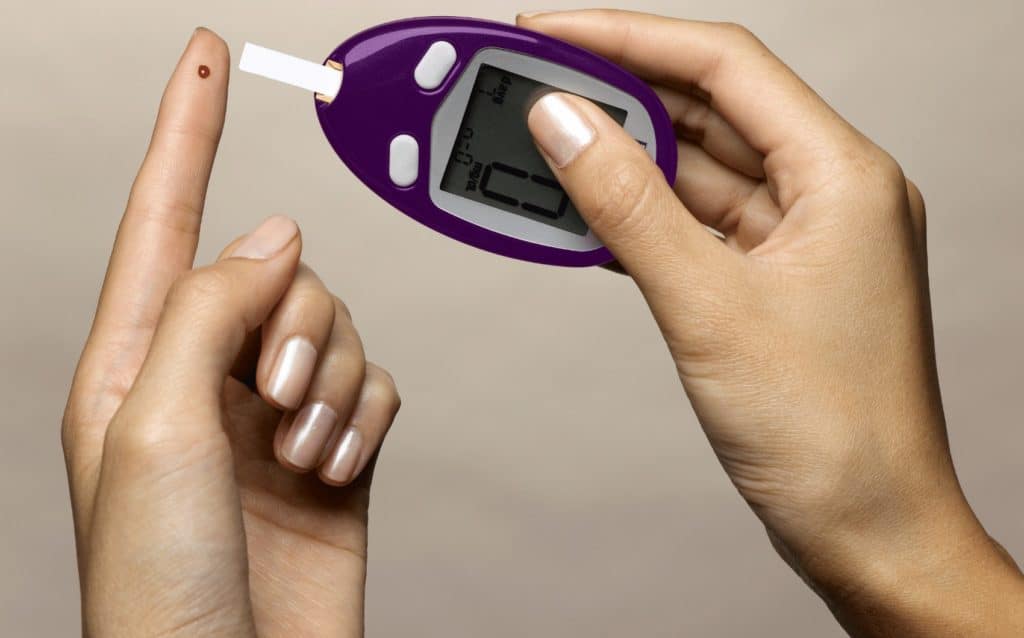
If you may find yourself in more than one risk factor mentioned above, you can visit your doctor for lab tests and get diagnosed right away.
According to The American Diabetes Association 2, several ways to detect prediabetes are as follows:
several ways to detect prediabetes are as follows:
- Fasting plasma glucose:
This means the amount of glucose present in your blood plasma after you haven’t eaten for a long period.
The test is done after 8 hours of fasting. If you have 100-125 mg/dl of glucose in plasma, you are diagnosed with prediabetes.
| Result | Fasting plasma glucose (FPG) |
| Normal | Less than 100 mg/dl |
| Prediabetes | 100mg/dl to 125 mg/dl |
| Diabetes | 126 mg/dl or higher |
- Hemoglobin A1c test:
This test measures your average blood sugar levels for the past two months. This gives a more accurate result and, no fasting is needed in this case.
| Result | A1C |
| Normal | Less than 5.7% |
| Prediabetes | 5.7% to 6.4% |
| Diabetes | 6.5% or higher |
- Oral Glucose Tolerance Test:
This is a two-hour test that checks the blood glucose in the body before and two hours after you eat or drink a sweet thing. It helps the doctor to track how your body processes sugar.
| Result | Oral Glucose Tolerance test |
| Normal | Less than 140 mg/dl |
| Prediabetes | 140 mg/dl to 199 mg/dl |
| Diabetes | 200 mg/dl or higher |
What is the actual cause of Pre-diabetes?
The main reason behind diabetes and prediabetes is “Insulin resistance” 3 Insulin resistance means your cells are not responding to insulin. Insulin is present but, cells are not responding to it.
Insulin resistance means your cells are not responding to insulin. Insulin is present but, cells are not responding to it.
Insulin is released by the pancreas, a gland behind the stomach. The function of insulin is to deliver glucose from the blood to cells and, the cells then utilize glucose. Glucose is what gives energy to cells. Glucose comes from the food we eat.
Take a lock and key example where a cell has specific doors for glucose that stay closed.
Insulin is the key that opens locks for glucose. But in the case of diabetes and prediabetes. These
doors on cells change their locks and, now insulin can’t open those changed locks. The Cell doesn’t
allow glucose (sugar) in and; thus, sugar levels increase in blood while cells
but cells don’t have glucose to use. Increased blood sugar levels are then detected in lab tests.
What causes Insulin resistance in the body?
According to NIH, National Institute of health, two main reasons that contribute to insulin resistance are excessive weight and physical inactivity. 4
Obesity is the main culprit for insulin resistance. Abdominal fat is alarming and associated with diseases. Another additional factor is having metabolic syndrome or polycystic ovarian syndrome.
or polycystic ovarian syndrome.
Metabolic syndrome
How to reverse prediabetes?
Reversing the causes can save you from diabetes. CDC recommends moderate weight loss, adequate physical activity and, nutritional food choices to reverse your pre-diabetic symptoms.
Taking small steps to bring lifetime changes in your eating pattern and overall daily activity can lower the risk for developing diabetes drastically.
CDC recommends working one-on-one with a registered dietician to help you with your goals. But we are also here to help you give an outline about what to eat and when to eat.
Let’s learn more about ways to reverse prediabetes and dig deeper into knowledge.
Moderate Weight Loss:
Just moderate weight loss can bring enormous changes in your body. Lose 5%-7% of total body weight to see changes in your body. CDC research shows If a 200 pounds person only loses 14 pounds, he or she diminished the risk of diabetes.
A 5-10% body fat reduction is associated with clinically meaningful improvements in pre-diabetic patients. It has been shown to improve pancreatic beta-cell function and increased the sensitivity of muscle and liver cells to insulin.
Fat loss reduces the burden on tissues, the fat globules in healthy cells push the nucleus to the periphery and, the cell loses its ability to function properly.
Midsection fat is the fat between muscles and important body visceral e.g.liver, pancreas, ovaries, stomach.
Removal of this fat improves the efficiency of the body.
Moderate Physical Activity:
WHO 5 recommends at least 150- 300 minutes of moderate-intensity aerobic physical activity or 75-100 minutes of vigorous physical activity for people living with chronic conditions, diabetes being one of them.
recommends at least 150- 300 minutes of moderate-intensity aerobic physical activity or 75-100 minutes of vigorous physical activity for people living with chronic conditions, diabetes being one of them.
People should also add muscle-strengthening activities at moderate or higher intensity targeting all major muscle groups; Glutes, Biceps, Triceps, Trapezius, Pectorals, Thigh muscles on two or more days per week. These bear additional benefits.
This activity is mandatory to reduce the detrimental effects of visceral fat that accumulates in the body due to a sedentary lifestyle.
Healthy Food Choices:
According to the University of Rochester medical center 6, your choices of what you eat, when you eat and, how much you eat directly affect the blood sugar levels.
6, your choices of what you eat, when you eat and, how much you eat directly affect the blood sugar levels.
Carbohydrates have the biggest effect on your blood glucose levels. You must know your carbs. Carbohydrates are the primary fuel for the body, but too many carbs at a time can surge the glucose level and disturb the balance in the body.
Many foods are rich in carbohydrates that are part of your daily diet. Potatoes, bread, pasta, milk, rice, fruits, and vegetables have carbohydrates in them.
Some of these items like potatoes, white bread, white rice, pasta, sugar beverages and, fruits surge the blood sugars more than other complex carbs. Whole wheat bread and steel-cut oats are complex carbohydrates so stick to them if your making choices.
What makes these carbs different from each other? Remember: Not all carbs are the same!
The Answer lies in fiber content and the glycemic index; the more the glycemic index, the more the blood sugar spikes. Fiber is a non-digestible part of carbohydrates. It forms the bulk of your stool.
What Is The Glycemic Index?
The Glycemic index 7 is a value assigned to carbohydrates based on how slowly or how quickly these foods cause an increase in blood sugar. It is a value ranging from zero to 100, where glucose has a value of 100, other carbs have varying values. We get these values by comparing them to the standard, which is glucose.
- Low Glycemic Index = 55 or below
- Medium Glycemic Index = 56 to 70
- High Glycemic Index = 70 or above
Some other factors also contribute to glycemic index such, as;
- How you cook your food? For example, raw vegetables have a high glycemic index as compared to cooked vegetables.
- The time you take to cook the food also affects the glycemic index. Pasta loses its glycemic value upon cooking for a longer time.
- High fiber content food usually has a low glycemic index.
- Ripen fruits become more sweetened thus have more glycemic index.
Know Your GLYCEMIC INDEX when shopping. 8
The lower the glycemic index, the lesser the sugar spike in blood. You should opt for low glycemic index food. Studies 9 show that people on low glycemic index foods diet; have a remarkable reduction in their body mass index ”BMI”, compared to those who eat food with a high glycemic index.
show that people on low glycemic index foods diet; have a remarkable reduction in their body mass index ”BMI”, compared to those who eat food with a high glycemic index.
The following data will give you some idea about the glycemic index of foods. 10
| Foods | Glycemic Index |
| White bread | 75 |
| Whole Wheat bread | 74 |
| Multi-grain bread | 53 |
| Corn tortilla | 46 |
| White rice | 73 |
| Brown rice | 68 |
| Barley | 28 |
| Whole wheat Spaghetti | 48 |
| White Spaghetti | 49 |
| Corn flakes | 81 |
| Boiled potato | 78 |
| Full fat milk | 39 |
| Skim milk | 38 |
| Chickpeas | 28 |
Glycemic Index vs. Glycemic Load; What’s the difference?
The Glycemic index tells how fast or slow carbohydrates will affect blood sugar but, it fails to tell us about the total amount of sugar entering the body.
Glycemic load tells the quantity of carbohydrate reaching your blood per serving of carbohydrate.
We can find the glycemic load by multiplying the total number of carbs per serving to the food’s glycemic index, divided by 100.
Above 20 is considered high, 11 to 19 is moderate and, below ten is considered low.
120 gm serving of pineapple has a glycemic load of only “6” but a glycemic index of 59. This happens because fruit has water content and, so we can eat it on a pre-diabetic diet in moderate amounts.
While looking for carbs in a food, look for these four things:
- The total amount of carbohydrate
- Quality of carbs e.g., Complex carbs or simple carbs
- Glycemic Index
- Glycemic load
If you find trouble sorting things out yourself, check out our free sample diet plan mentioned below, specially tailored for pre-diabetic patients with Macro count and calorie details.
and calorie details.
What should I look for in my food other than carbs?
Quality Carbohydrates are key to a pre-diabetic diet but, there are some other factors you must keep in mind while chasing foods for yourself or your loved ones suffering from prediabetes.
Eat Fibre Rich Food:
Fiber is a staple for diet. Because of fiber, food takes time to digest; thus, fiber makes you feel full longer. It curbs hunger and creates satiety hormone in the brain. You must add fiber to your pre-diabetic diet.
A low-fat diet with 30 gm/day fiber intake represented an effective hunger curbing and weight loss effect. Research 11 supports this idea as well. Fiber improves disturbances in carbohydrate and lipid metabolism.
We have shared some High fiber foods with you that you must add to your diet. Make sure you are eating enough fiber daily for a healthy gut and effective weight loss.
Fibre-rich; low-carb foods:
Vegetables: Sweet potato, Yams, Kale, Green beans, Spinach, Lettuce, Cabbage, Cauliflower, Broccoli, Radish, Carrots, Cucumber, Asparagus, Artichokes, Swiss Chard, Brussels sprouts, Zucchini, Garlic, Ginger, Leeks.
Fruits: Grapefruit, Avocado, Plum, Blackberries, Strawberries, Blueberries, Apple, Pear, Plum, Peach, Pineapple, Coconut, Kiwi, Orange, Cherries, Mulberry.
Grains and Cereals: Steel-cut oats, Rolled Oats, Whole Wheat Pasta, barley, whole wheat bread, multi-seeded bread, quinoa, brown rice.
seeds: flax seeds, chia seeds, hemp, pumpkin seeds, sunflower seeds, white sesame, black sesame
Nuts: almonds, walnuts, peanuts, cashew, pistachios, pecans, hazelnuts.
Beans and legumes: all lentils ( red, brown, green, French), kidney beans, white beans, chickpeas.
Eat more lean protein:
Studies  12 show increasing evidence of association of proteins to weight loss, better diabetes control, improvement in blood pressure, reduction in inflammatory markers and, lipid profile. Increasing the protein intake to 1.5-2g/kg (25 to 30% total caloric intake) during weight reduction is recommended for diabetic or obese patients.
12 show increasing evidence of association of proteins to weight loss, better diabetes control, improvement in blood pressure, reduction in inflammatory markers and, lipid profile. Increasing the protein intake to 1.5-2g/kg (25 to 30% total caloric intake) during weight reduction is recommended for diabetic or obese patients.
These people must have healthy kidneys to excrete amino acids. Amino acids are the end-product of protein metabolism.
Increased protein intake increases the tissue response to insulin, causes a significant reduction in hemoglobin A1c.
Higher protein also creates satiety and makes you less hungry. Try to add protein to each meal of the day.
Some of the high protein foods you can add to your diet are:
Chicken breast
Skinless chicken thighs
Turkey
Salmon ( rich in omega-3
Whitefish
Lean beef
What Foods Should I Avoid At All Costs in a Pre-Diabetic Diet?
Highly processed foods:
Discard all the chocolate bars, packaged snacks, chips, and jellies. There is no space for highly processed foods in your diet. Now you might wonder what a 100 calories potato chips packet can do to me?
Well, these foods are not only empty calories but also high in sodium and sugar. High sodium increases your risk of developing hypertension.
Instead of this, opt for healthy snacks like dark chocolate, protein bars (Check the labels), granola bars or, unsweetened jams.
Fizzy Drinks and Sweetened Beverages:
Beware of your fruit juices! Companies scam their customers on the name of packaged fruit juices where the real fruit content is so low. These juices are full of sugar, artificial flavors and, colors.
Try to eat fiber-rich fruits instead of fresh juices because juices spike blood sugar more than the fruit itself. Fruit will also give you the necessary fiber.
Sodas and fizzy drinks are empty calories and, even sugar-free colas are harmful to the body so, avoid them at all costs.
Trans Fat:
Newer researches recommend low-carb food diets as compared to low-fat diets. Because fat gives satiety, but still fats are packed with calories and, all diets need a caloric deficit to work.
Trans fat is different from polyunsaturated, monounsaturated and, saturated fats. Trans fats are bad fats present in vegetable oils and margarine. Avoid these fats otherwise, they block coronary arteries, leading to atherosclerosis or, may end up in stroke one day. 13
The famous Diabetes Plate Method; Portion Control
We have told you about what to eat and what not to; let’s dig in about how to eat? Top dieticians around the globe recommend this method and, it has the approval of the American Diabetes Association 14
According to this, every plate should look like: 50 % non-starchy vegetables, 25 % complex carbohydrates and, 25 % lean protein. If you can’t eat all this together, try to have some amounts of all food groups in your meals. Results should be the same.
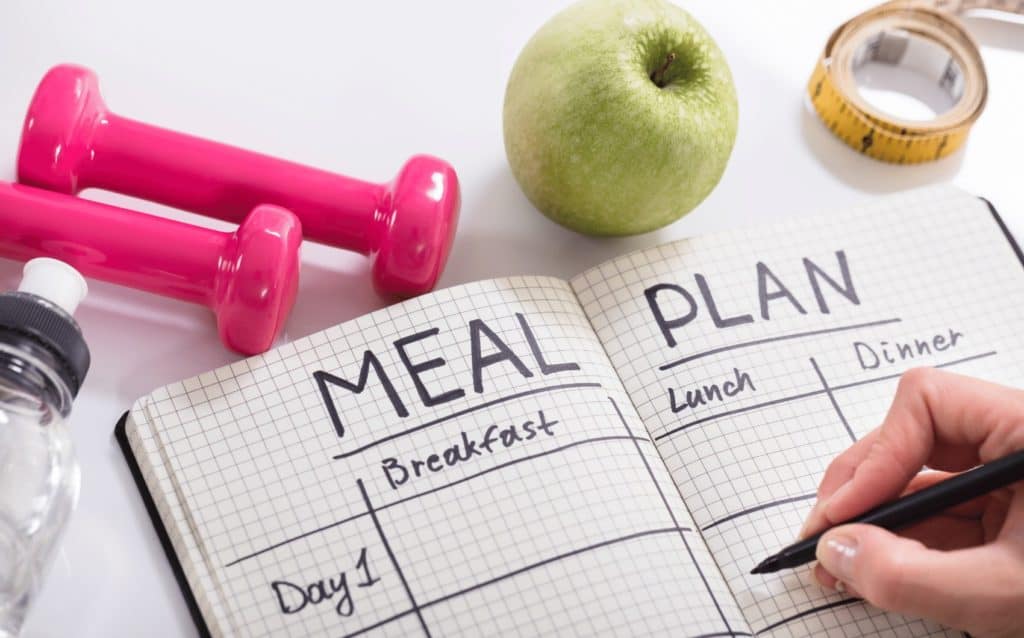 Are you still confused about what to eat? We have a seven-day meal plan just for you. Scroll down and enjoy!
Are you still confused about what to eat? We have a seven-day meal plan just for you. Scroll down and enjoy!
Monday:
Meal 1; Breakfast:
- 50gm Steel cut oats with 1 cup skimmed milk and 50gm blackberries.
- two hard-boiled eggs
Total calories: 380
Macro count:
Carbs: 35 g, Fat: 7 g, Protein: 24 g, Fiber: 5 g
Meal 2; lunch
- One bowl Mixed vegetable salad with olive oil (1tsp) and lemon dressing
- five almonds
Total calories: 320
Macro count:
Carbs: 11gm, Fat: 5 g, Protein: 1 g fiber: 13 g
Meal 3; Dinner
- 100 g Chicken breast baked with grilled asparagus and broccoli and 80 gm brown rice
Total calories: 300
portions: 1.5 portion Protein, 1 Carb portion
Macro count:
Carbs: 30 gm, Fat: 5gm, Protein: 25 gm, Fiber: 5 gm
Snack 1: Any seasonal fruit
Snack 2: 1 cup greek yogurt
Total calories
with snacks: 1200 calories.
Tuesday:
Meal 1; Breakfast:
- One slice of multi-grain bread
- 20 gm sugar-free strawberry jam
- 1 cup skim milk
Total calories: 150
Total portions: 1 portion carb, One portion dairy
Macro count: 25 g Carbs, Protein: 4 g, Fibre: 4 g
Meal2; Lunch:
- 100 gm Baked salmon
- One small bowl of vegetable salad with olive oil and lemon dressing
Total calories: 370
Macro count:
Carbs: 25 g, Fat: 7 g, Protein: 30 g, Fibre: 13 g
Meal3; Dinner:
- 80 g whole wheat spaghetti with 60g meatballs and homemade sugar-free tomato sauce, 30 gm mozzarella cheese.
Total calories: 360
Macro count:
Carbs: 30 g ,Fat: 10 g ,Protein: 26 g, fibre: 6 g
Snack 1: Protein bar
Snack 2: Any fruit except banana, pineapple and, watermelon
Total calories without snacks: 880
Total calories including snacks: 1150
Wednesday:
Meal1; Breakfast:
- 250 ml Strawberry milk smoothie with stevia as sweetener. Don’t use table sugar at all. Add chia seeds to increase nutritional value.
Total calories: 270
Meal2; Lunch:
- Tuna sandwich using bran bread and only 1 tsp mayo
- One bowl mixed vegetable salad
Total calories: 430
Meal3; Dinner:
- One bowl Lentil soup
- Stir fry vegetables
Total calories: 280
Macro count:
25 gm carbs, 9gm fat, 8 gm protein, fiber: 9 g
Snack1: Any seasonal fruit except high glycemic index fruits.
Snack 2: 35 gm Roasted chickpeas: 115 calories
Total calories excluding snacks: 980
Total calories including snacks: 1180
Thursday:
Meal1; Breakfast:
- Avocado on toast
- One hard-boiled egg
- A hand full of berries
Total calories: 360
Macro Count: Carbs 20 g, Protein: 10 g, Fat: 28 g, Fiber: 8 g
Meal2; Lunch:
One bowl of Chicken soup
with vegetables of your choice
Total calories: 300
Macro count: Protein: 28 g, Fiber: 10 g
Meal 3; Dinner:
Grilled chicken sandwich
Total calories: 300
Macro count: 33 g carbs, 29 g protein, 6 g fat
Snack 1: 30 g corn on the cob
Snack 2: Granola bar
Total calories with
snack: 1120
Friday:
Meal1; Breakfast:
One Sugar-free peanut butter sandwich. Don’t add jelly to it.
Total calories: 170
Macro count: Carbs 15g, Fat 5g, Protein: 4g
Meal2; Lunch:
Balsamic vinegar chicken with roasted vegetables
Total calories: 220
Macro count: protein 30 g, Carb 2 g, Fat 5g
Meal 3; Dinner:
One bowl salad with any dressing ( not exceed 2 tsp)
Total calories: 250
Macro count: Carbs: 21g , Protein 10 g: ,Fat: 8 g
Snack 1: Whole wheat pita with hummus
Snack 2: 4 walnuts
Total calories with snacks: 1100
Saturday:
Meal 1: Breakfast:
French mushrooms omelet with 1.5 tsp butter only
One cup Green beans
Total calories: 298
Macro count: Fat 12g, Protein 32g, Carbohydrates 14g
Meal 2; Lunch:
Kidney bean vegetable salad
Total calories: 230
Macro count: protein 15.3g, carbs 8 g, fat 0.9g
Meal 3; Dinner
Two chicken sausages
80 g brown rice
Total calories: 415
Macro count: Proteins 33g, Carbs 30g, Fiber 7g, Fat 10g
Snack 1: Any fruit
Snack 2: Whole wheat crackers
Total calories with snacks: 1180
Sunday:
Cheat day, But don’t go overboard. Enjoy in a limit. Still, sugar, processed foods and, chocolates are not allowed. Go for a thin crust pizza or a grilled burger.
How to measure Portions.
For Carbs
80 g rice = 1 portion
40 g pasta = 1 portion
40 g bread = 1 portion
80 g fruit = 1 portion
For Proteins:
80 g chicken/ lean beef = 1 portion
80 g fatty fish = 1 portion
120 g white fish = 1 portion
Legumes 40 g = 1 portion
2 eggs= 1 portion
For Fats:
7g or 1 tsp oil/butter = 1 portion
Mayo 1 tsp = 1 portion
For Vegetables:
Portion free, aim for one bowl each day.
The Bottom line:
Prediabetes is a serious concern that may lead to diabetes type 2. But If you have caught it early, you can reverse your symptoms by following a simple diet and avoiding sugar, refined carbs and, trans fats.
Aim for an active lifestyle. Increase your non-exercise activity thermogenesis NEAT. walk around your block, join a Zumba class, lift weights, join a gym or walk with a group.
You can make a diet plan of your own by following simple guidelines or visit a dietician. Stick to the plan. Take small steps. Don’t be harsh on yourself; otherwise, you will give up before you see results. Start with one habit daily such as giving up fizzy drinks and chocolates.
You can follow portion control or try any low-carb diet like a Keto diet
or Atkins,
etc. Treat yourself sometimes.
Begin today! Your healthy future awaits! Leave no regrets. Life is beautiful, and you should be fit to enjoy it to the fullest.
References and Citations:
1. CDC.gov
2. diabetes.org American diabetes association
3. Freeman AM, Pennings N. Insulin Resistance. In: StatPearls. Treasure Island (FL): StatPearls Publishing; July 10, 2020.
Mayans L. Metabolic Syndrome: Insulin Resistance and Prediabetes. FP Essent. 2015;435:11-16.
4. https://www.niddk.nih.gov/health-information/diabetes/overview/what-is-diabetes/prediabetes-insulin-resistance
5. WHO https://www.who.int/news-room/fact-sheets/detail/physical-activity
6. https://www.urmc.rochester.edu/encyclopedia/content.aspx?contenttypeid=56&contentid=DM113#:~:text=And%20it%20should%20focus%20on,and%20dried%20beans%20and%20peas
7. Juanola-Falgarona M, Salas-Salvadó J, Ibarrola-Jurado N, et al. effect of the glycemic index of the diet on weight loss, modulation of satiety, inflammation, and other metabolic risk factors: a randomized controlled trial. Am J Clin Nutr. 2014;100(1):27-
35. doi:10.3945/ajcn.113.081216
8. Wolever T. M. (2013). Glycemic index claims on food labels: a review of Health Canada’s evaluation. European journal of clinical nutrition, 67(12), 1229–1233. https://doi.org/10.1038/ejcn.2013.193
9. https://www.health.harvard.edu/diseases-and-conditions/glycemic-index-and-glycemic-load-for-100-foods
10. https://www.health.harvard.edu/diseases-and-conditions/glycemic-index-and-glycemic-load-for-100-foods
11. Wolfram, T., & Ismail-Beigi, F. (2011). Efficacy of high-fiber diets in the management of type 2 diabetes mellitus. Endocrine practice: official journal of the American College of Endocrinology and the American Association of Clinical Endocrinologists,
17(1), 132–142. https://doi.org/10.4158/EP10204.RA
12. Hamdy, O., & Horton, E. S. (2011). Protein content in diabetes nutrition plan. Current diabetes reports, 11(2), 111–119. https://doi.org/10.1007/s11892-010-0171-x
13. Dalainas, I., & Ioannou, H. P. (2008). The role of trans fatty acids in atherosclerosis, cardiovascular disease and, infant development. International angiology: a journal of the International Union of Angiology, 27(2), 146–156.
Recent Posts
How To Reverse Fatty Liver Disease Through Diet (7 Day Sample Diet)!
Is A Fatty Liver Reversible? Fatty Liver Diet Plan and Menu Here we tell you everything you need to know about the fatty liver diet, menu, recipes, tips, and tricks. Did you just get diagnosed...
How to lose weight for teenage girls. A complete guide with tips
Lose weight and surprise your friends with your transformation. Follow our exclusive weight loss tips, healthy diet, and workout routine for teenage girls-all backed by science and recommended by...


